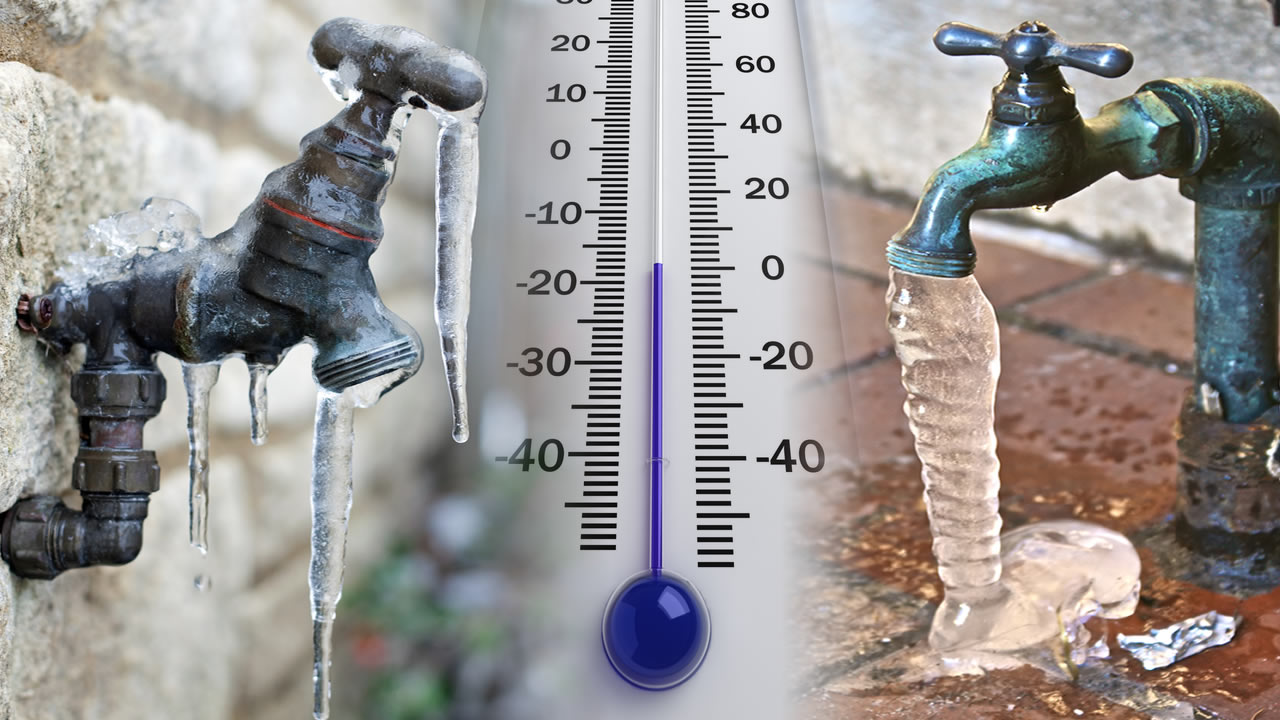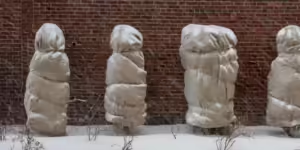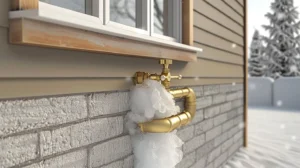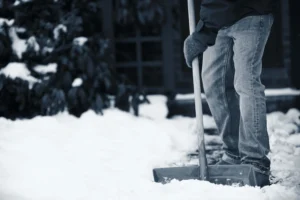As winter temperatures drop, your plumbing system becomes vulnerable to freezing, which can lead to burst pipes, water damage, and costly repairs. Even if you’re short on time, there are simple steps you can take to protect your plumbing and avoid cold-season disasters. Here’s how to winterize your plumbing quickly and effectively.
1. Insulate Exposed Pipes
Exposed pipes in unheated areas, like basements, attics, and crawl spaces, are especially vulnerable to freezing. Insulating them is a quick and effective way to prevent issues.
- How to insulate pipes:
- Use foam pipe insulation sleeves to wrap exposed pipes. These are inexpensive and easy to install.
- Apply heat tape or heat cables for pipes in extremely cold areas, following the manufacturer’s instructions.
- Secure insulation with duct tape to ensure full coverage.
- Why it works: Insulation helps maintain a steady temperature, reducing the risk of frozen pipes.
2. Let Faucets Drip
Allowing a small trickle of water to flow from faucets can keep your pipes from freezing during cold spells.
- What to do:
- Open the faucet connected to any pipes at risk of freezing, especially those along exterior walls.
- Let both hot and cold water drip slightly to keep water moving through the system.
- Why it works: Moving water is less likely to freeze, and relieving pressure in the pipes can prevent them from bursting if they do freeze.
3. Seal Drafts Around Pipes
Cold air entering your home can freeze nearby pipes, even if they’re indoors. Sealing gaps around pipes reduces this risk.
- How to seal drafts:
- Use caulk or spray foam insulation to seal gaps around pipes entering your home.
- Install weatherstripping around windows and doors near plumbing to block drafts.
- Check for cracks in the foundation or walls where cold air might seep in.
- Why it works: Eliminating drafts keeps pipes warmer and reduces the likelihood of freezing.
4. Disconnect Outdoor Hoses
Leaving hoses attached to outdoor faucets can trap water, which can freeze and cause damage to both the faucet and connecting pipes.
- What to do:
- Disconnect all garden hoses and drain them completely before storing them indoors.
- Close the shut-off valve for outdoor faucets, if available, and open the faucet to drain any remaining water.
- Why it works: Removing hoses and draining outdoor faucets prevents water from freezing and expanding, which could crack pipes.
5. Shut Off and Drain Sprinkler Systems
If you have an irrigation system, draining it is essential to prevent freezing and damage to underground pipes.
- How to winterize sprinklers:
- Turn off the water supply to the system.
- Use the system’s drain valves to release water from the pipes.
- Blow out remaining water with compressed air if necessary.
- Why it works: Removing water from the system ensures freezing temperatures won’t cause damage.
6. Locate Your Main Shut-Off Valve
In case of a burst pipe, knowing how to quickly shut off your water supply can minimize damage.
- How to prepare:
- Identify the location of your home’s main water shut-off valve, typically found near the water meter or where the main line enters your home.
- Test the valve to ensure it’s working properly, and keep the area around it clear for easy access.
- Why it works: Quick access to the shut-off valve allows you to stop water flow and limit damage in an emergency.
7. Use Pipe Covers on Outdoor Faucets
Exposed outdoor faucets are highly susceptible to freezing. Covering them provides an added layer of protection.
- How to cover faucets:
- Install insulated faucet covers, available at most hardware stores, over outdoor spigots.
- For a DIY solution, wrap the faucet with old towels or rags, then secure them with duct tape and cover with a plastic bag.
- Why it works: Faucet covers shield outdoor fixtures from the cold, reducing the risk of frozen pipes.
8. Keep Your Home Warm
Maintaining a consistent indoor temperature helps prevent pipes from freezing, even in hidden areas.
- What to do:
- Set your thermostat to at least 55°F, even if you’re leaving the house for an extended period.
- Open cabinet doors under sinks to allow warm air to circulate around pipes.
- Close garage doors to keep cold air away from plumbing in attached garages.
- Why it works: A warm home environment keeps indoor pipes above freezing temperatures.
9. Check for Leaks
Even small leaks can cause big problems during freezing weather. Inspect your plumbing for signs of trouble.
- How to check for leaks:
- Look for damp spots under sinks or along exposed pipes.
- Listen for dripping or running water where it shouldn’t be.
- Repair leaks with plumber’s tape or sealant, or call a professional for larger issues.
- Why it works: Fixing leaks prevents water from freezing in unexpected places, reducing the risk of pipe bursts.
10. Have Emergency Supplies Ready
Being prepared for a potential freeze can save you time and stress if an issue arises.
- What to have on hand:
- A space heater or heat lamp for thawing frozen pipes safely.
- A hairdryer for gentle heating of frozen sections.
- Towels and buckets to manage water in case of leaks or bursts.
- Why it works: Quick access to supplies ensures you can respond immediately to plumbing issues.
11. Call a Professional for Help
If you’re unsure about your plumbing’s readiness for winter or notice signs of freezing, consult a plumber.
- When to call:
- If pipes are already frozen or you can’t locate your main shut-off valve.
- If you notice persistent leaks or water pressure issues.
- If you need help winterizing complex systems like irrigation or outdoor plumbing.
- Why it works: Professional assistance ensures your plumbing is fully protected and reduces the risk of costly repairs.
Final Thoughts: Stay Ahead of Winter
Winterizing your plumbing doesn’t have to be a time-consuming or complicated task. By taking these last-minute steps, you can protect your pipes, prevent freezing, and enjoy a worry-free winter season. A little preparation now will save you time, money, and stress later—so get started today!









